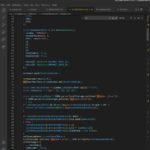We are using JavaScript Chart Editable Annotations but we need some more modificaions in that which can enhance this feature in terms of user experience.
Currently when the anonations are loaded they are havinng a fixed shape but we want the annotations to be draggable as soon as they are loaded in the charts whitout any extra clicks,this feature is provided by tradingView charts and we also want to provide the same to our users.
I have attached images and videos for better understanding of the issue.
Hope we can get the solution of this issue asap.
Please refer to the below video link for beter understanding.
https://www.loom.com/share/213b66eb21db44f9ac2457a89563a21a
- Saksham Jaiswal asked 1 year ago
- last edited 1 year ago
- You must login to post comments
Very cool application Saksham, and I understand exactly what you need and why.
I will be honest though we are quite busy with the SciChart.js v3 release, and important technical requirements. So I will log this as a feature request but put as low priority for now.
When do you expect to release your app?
Best regards
Andrew
- Andrew Burnett-Thompson answered 1 year ago
- You must login to post comments
The best way to dynamically create annotations like this is with a custom modifier. There is an example in our examples github. That was created a while ago and I thought I would try to improve it a bit. Below is a better modifier which takes advantage of some v3 features. The key idea is to do the initial resizing of the annotation in the modifier, rather than trying to use the editability of the Annotation. I did try that, but it turns out to be awkward because you cannot really select an annotation for editing before it has been drawn.
This version creates a box annotation by click and drag, which can then be edited further, or deleted by right clicking. It also has a threshold size enforced in modifierMouseUp which means that if you just click, you don’t get 0 size annotations added.
I will incorporate this into a full public example soon which supports adding different types of annotation.
Regards
David
import {ChartModifierBase2D} from "scichart/Charting/ChartModifiers/ChartModifierBase2D";
import {ModifierMouseArgs} from "scichart/Charting/ChartModifiers/ModifierMouseArgs";
import {Point} from "scichart/Core/Point";
import { AnnotationBase, ECoordinateMode } from "scichart/Charting/Visuals/Annotations/AnnotationBase";
import { translateFromCanvasToSeriesViewRect } from "scichart/utils/translate";
import { AnnotationClickEventArgs } from "scichart/Charting/Visuals/Annotations/AnnotationClickEventArgs";
import { BoxAnnotation } from "scichart/Charting/Visuals/Annotations/BoxAnnotation";
import { EExecuteOn } from "scichart/types/ExecuteOn";
// Create a TypeScript class which inherits ChartModifierbase2D to insert into SciChartSurface.chartModifiers collection
export class CreateAnnotationModifier extends ChartModifierBase2D {
public readonly type: string = "CreateAnnotationModifier";
private editingAnnotation: AnnotationBase;
private startPoint: Point;
constructor() {
super();
}
// The annotation to be created
public createAnnotation(): AnnotationBase {
return new BoxAnnotation({
// Make the created annotation editable
isEditable: true,
// Make it removable on right click
onClick: (args: AnnotationClickEventArgs) => {
if (args.mouseArgs.button !== EExecuteOn.MouseRightButton) return;
args.sender.parentSurface.annotations.remove(args.sender);
args.sender.delete();
}
});
}
// Called when mouse-down on the chart
public modifierMouseDown(args: ModifierMouseArgs): void{
super.modifierMouseDown(args);
const point = translateFromCanvasToSeriesViewRect(args.mousePoint, this.parentSurface.seriesViewRect);
if (!this.editingAnnotation) {
// If no editingAnnotation, then add one
this.addAnnotation(point);
this.editingAnnotation.isSelected = true;
this.startPoint = args.mousePoint;
}
}
//Called when mouse-move on the chart
public modifierMouseMove(args: ModifierMouseArgs): void {
super.modifierMouseMove(args);
// Update the annotation
if (this.editingAnnotation) {
const point = translateFromCanvasToSeriesViewRect(args.mousePoint, this.parentSurface.seriesViewRect);
this.updateAnnotation(point);
}
}
// Called when mouse-up on the chart
public modifierMouseUp(args: ModifierMouseArgs) {
super.modifierMouseUp(args);
if (this.editingAnnotation) {
// If already editingAnnotation, then end the creation and reset flags
const point = translateFromCanvasToSeriesViewRect(args.mousePoint, this.parentSurface.seriesViewRect);
this.updateAnnotation(point);
// Remove the annotation if it is below a minimum size
if (Math.abs(args.mousePoint.x - this.startPoint.x) < 5 && Math.abs(args.mousePoint.y - this.startPoint.y) < 5) {
this.parentSurface.annotations.remove(this.editingAnnotation);
this.editingAnnotation.delete();
}
this.editingAnnotation.isSelected = false;
this.editingAnnotation = undefined;
}
}
private addAnnotation(mousePoint: Point) {
// Create an annotation and assign X,Y axis id
// Use builder api to create annotations based on a type
this.editingAnnotation = this.createAnnotation();
this.editingAnnotation.xAxisId = this.xAxisId;
this.editingAnnotation.yAxisId = this.yAxisId;
let xCoord = mousePoint.x;
let yCoord = mousePoint.y;
// Set the X,Y coords of the annotation. Note that the pixel coordinates of the mouse-down
// event must be translated to data-coordinates if ECoordinateMode.DataValue
if (this.editingAnnotation.xCoordinateMode == ECoordinateMode.DataValue) {
const xAxis = this.parentSurface.xAxes.getById(this.xAxisId);
xCoord = xAxis.getCurrentCoordinateCalculator().getDataValue(mousePoint.x);
}
this.editingAnnotation.x1 = xCoord;
this.editingAnnotation.x2 = xCoord;
if (this.editingAnnotation.yCoordinateMode == ECoordinateMode.DataValue) {
const yAxis = this.parentSurface.yAxes.getById(this.yAxisId);
yCoord = yAxis.getCurrentCoordinateCalculator().getDataValue(mousePoint.y);
}
this.editingAnnotation.y1 = yCoord;
this.editingAnnotation.y2 = yCoord;
// Add the annotation to the surface
this.parentSurface.annotations.add(this.editingAnnotation);
}
private updateAnnotation(mousePoint: Point) {
// Update the position of an annotation using its X,Y Axis and the
// coordinate calculator to transform to coordinate
if (this.editingAnnotation.xCoordinateMode == ECoordinateMode.DataValue) {
const xAxis = this.parentSurface.getXAxisById(this.editingAnnotation.xAxisId);
this.editingAnnotation.x2 = xAxis.getCurrentCoordinateCalculator().getDataValue(mousePoint.x);
} else {
this.editingAnnotation.x2 = mousePoint.x;
}
if (this.editingAnnotation.yCoordinateMode == ECoordinateMode.DataValue) {
const yAxis = this.parentSurface.getYAxisById(this.editingAnnotation.yAxisId);
this.editingAnnotation.y2 = yAxis.getCurrentCoordinateCalculator().getDataValue(mousePoint.y);
} else {
this.editingAnnotation.y2 = mousePoint.y;
}
}
}
- David Burleigh answered 1 year ago
- You must login to post comments
Please login first to submit.


